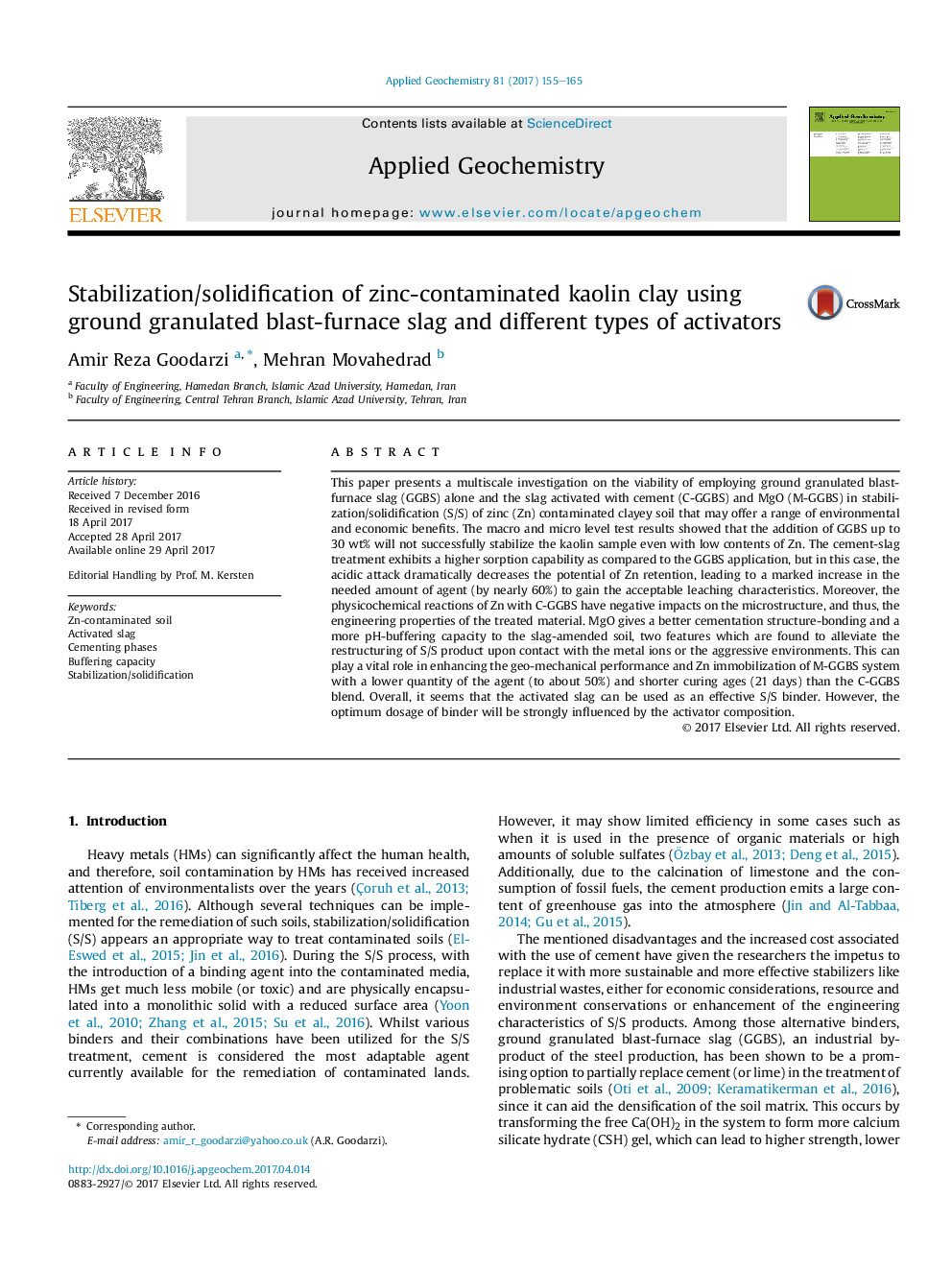| کد مقاله | کد نشریه | سال انتشار | مقاله انگلیسی | نسخه تمام متن |
|---|---|---|---|---|
| 5752465 | 1620210 | 2017 | 11 صفحه PDF | دانلود رایگان |
عنوان انگلیسی مقاله ISI
Stabilization/solidification of zinc-contaminated kaolin clay using ground granulated blast-furnace slag and different types of activators
ترجمه فارسی عنوان
تثبیت / فرسایش خاک رس کائولن آلوده به روی با استفاده از سرباره انفجار دانه گرانشی زمین و انواع مختلف فعال کننده ها
دانلود مقاله + سفارش ترجمه
دانلود مقاله ISI انگلیسی
رایگان برای ایرانیان
موضوعات مرتبط
مهندسی و علوم پایه
علوم زمین و سیارات
ژئوشیمی و پترولوژی
چکیده انگلیسی
This paper presents a multiscale investigation on the viability of employing ground granulated blast-furnace slag (GGBS) alone and the slag activated with cement (C-GGBS) and MgO (M-GGBS) in stabilization/solidification (S/S) of zinc (Zn) contaminated clayey soil that may offer a range of environmental and economic benefits. The macro and micro level test results showed that the addition of GGBS up to 30Â wt% will not successfully stabilize the kaolin sample even with low contents of Zn. The cement-slag treatment exhibits a higher sorption capability as compared to the GGBS application, but in this case, the acidic attack dramatically decreases the potential of Zn retention, leading to a marked increase in the needed amount of agent (by nearly 60%) to gain the acceptable leaching characteristics. Moreover, the physicochemical reactions of Zn with C-GGBS have negative impacts on the microstructure, and thus, the engineering properties of the treated material. MgO gives a better cementation structure-bonding and a more pH-buffering capacity to the slag-amended soil, two features which are found to alleviate the restructuring of S/S product upon contact with the metal ions or the aggressive environments. This can play a vital role in enhancing the geo-mechanical performance and Zn immobilization of M-GGBS system with a lower quantity of the agent (to about 50%) and shorter curing ages (21 days) than the C-GGBS blend. Overall, it seems that the activated slag can be used as an effective S/S binder. However, the optimum dosage of binder will be strongly influenced by the activator composition.
ناشر
Database: Elsevier - ScienceDirect (ساینس دایرکت)
Journal: Applied Geochemistry - Volume 81, June 2017, Pages 155-165
Journal: Applied Geochemistry - Volume 81, June 2017, Pages 155-165
نویسندگان
Amir Reza Goodarzi, Mehran Movahedrad,
